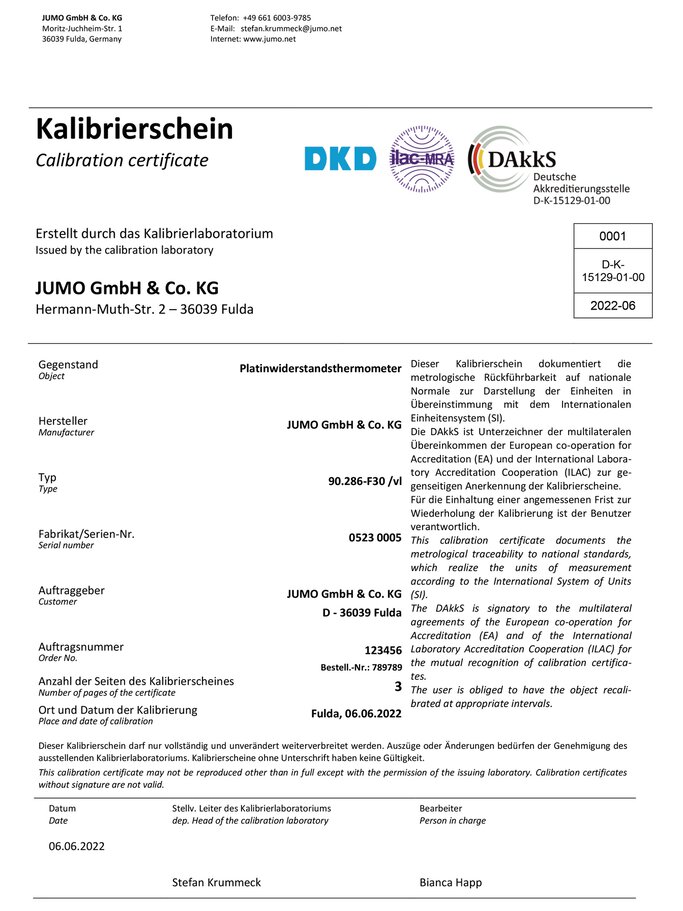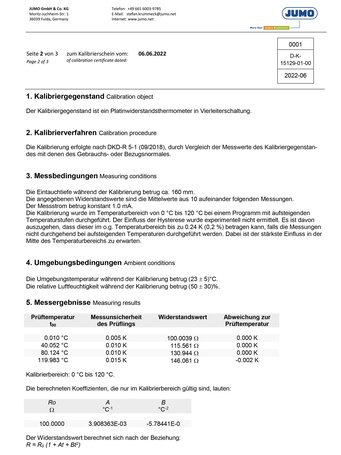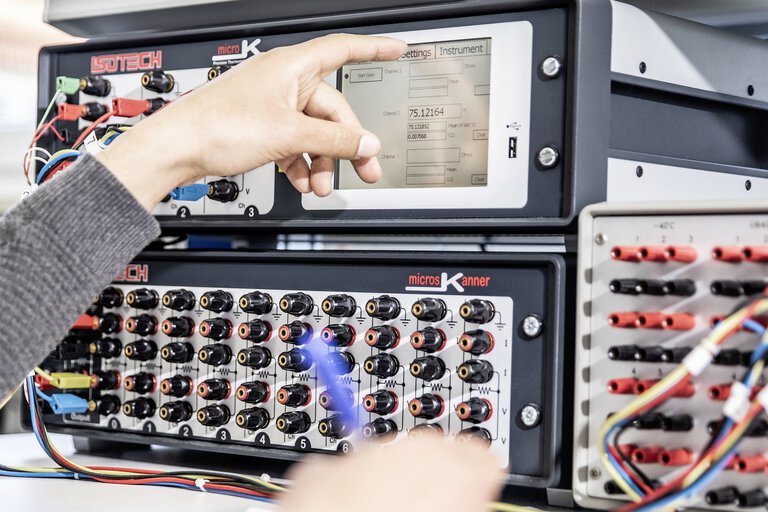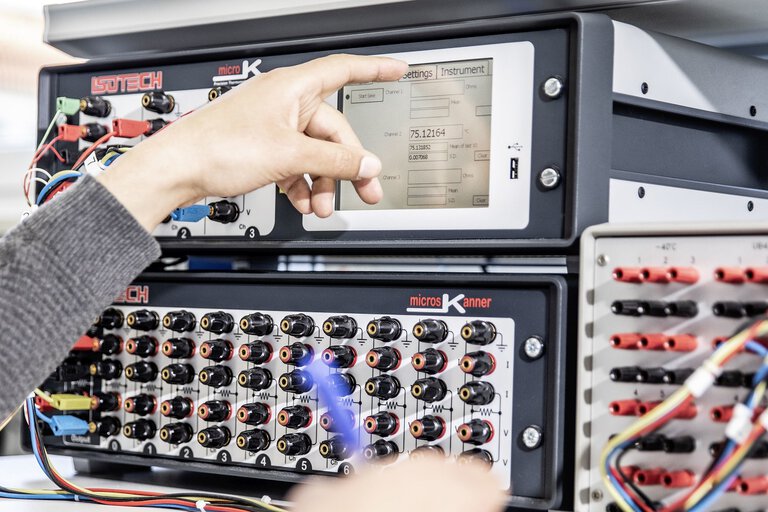
Calibration – the most important questions and answers
As a standard procedure for ensuring measurement accuracy, calibration has long been an integral part of everyday industrial life. First documented in the late 18th century, it has continued to evolve and has become an important component of quality control and the smooth operation of industrial plants. The most important facts about the calibration of measuring devices are explained below.
Table of contents
What is calibration?
Calibration is a process in which the measuring accuracy of a measuring device is checked. This is done by comparing the measured values of the device to be calibrated with a standard or a reference device that is already known to be accurate. The aim of calibration is to ensure that the device under test delivers reproducible and accurate results.
Why do measuring devices need to be calibrated?
Measuring devices must be calibrated to ensure their accuracy and reliability over a long period of time. After all, they can become inaccurate over time due to wear and tear, environmental influences, or other factors.
In addition, the calibration of measuring equipment is crucial to meet safety standards. This is particularly true in critical industries such as medical technology or aerospace, where inaccurate measurements can lead to serious safety risks, as well as in research and development to ensure the integrity and reliability of data.
Calibration helps users of measuring devices to comply with legal regulations as well as industry standards and avoids production errors that can be caused by inaccurate measurements.
Which measuring equipment needs to be calibrated?
A large number of measuring equipment must be calibrated at regular intervals, including scales, thermometers, RTD temperature probes, thermocouples, pressure gauges, pressure measuring devices, flowmeters, linear encoders, electrical measuring devices, and many other test devices. Essentially every device used for precise measurements in industrial, scientific, or medical applications requires regular calibration.
Who is authorized to calibrate measuring devices?
Calibrations for measuring equipment can be carried out by external testing and calibration laboratories as well as by internal departments within a company. This flexibility allows companies to choose a suitable option for the calibration of their measuring devices, based on their specific requirements and resources.
What calibrations are available?
Calibrations can be differentiated according to the respective measurands or measuring equipment. Frequently used terms here are temperature calibrations, pressure calibrations, or humidity calibrations. Different calibration procedures and reference standards are used depending on the measurand and measuring device.
How often should calibrations be carried out?
The frequency with which calibrations should be performed may vary depending on the type of measuring device, its intended use, the specific requirements of the industry, and the environmental influences. Important criteria include the manufacturer's recommendations, the intensity of use, regulatory requirements, and historical performance data. Many companies opt for annual calibrations. In any case, it is important that the decision for the calibration frequency is carefully documented and regularly reviewed to ensure that it remains appropriate.
What are measurement tolerances?
Measurement tolerances define the accepted error range or the limits of deviation that are admissible when measuring a specific value. They are a crucial part of quality control in manufacturing processes and other applications where precision is important. The definition of measurement tolerances covers several key aspects. These include the respective requirements as well as the defined upper and lower limit values.
In many industries, there are standardized tolerances that are defined in standards such as ISO or DIN. These standards facilitate the communication and standardization of tolerances across different industries and applications.
How many and which measuring points should be defined for a calibration?
The number and selection of measuring points for a calibration depend on various factors such as the type of measuring device, the intended use, the requirements of the specific application, and the applicable industry standards. In principle, however, the entire working range of the device to be calibrated should be mapped so that the lower and upper measuring points are already defined. The following factors also play a role in defining the measuring points:
Accuracy requirements
In applications in which a high degree of accuracy is required, several measuring points should be distributed over the entire measuring range to ensure precise calibration.
Critical points
For some applications, certain measuring ranges may be more critical than others. In such cases, the critical points should be taken into account in the calibration.
Recommendations and standards
Many industries have specific standards or guidelines that specify how many and which measuring points should be used for a calibration. These standards should be followed to ensure conformity and quality.
Historical data
Previous performance data of the device can indicate at which points the device to be calibrated tends to be outside the tolerance limits and can therefore be helpful when selecting the measuring points.
Due to this complexity, in many cases it is advisable to contact an accredited laboratory to ensure that the calibration meets the specific requirements and standards.
What does an accredited calibration entail?
In an accredited calibration, a laboratory recognized by an official accreditation body performs the calibration of measuring devices. This type of calibration is carried out in accordance with specified standards and norms that are internationally recognized. In Germany, for example, calibration laboratories are accredited by the Deutsche Akkreditierungsstelle (DAkkS).
What is a calibration certificate from an accredited calibration laboratory?
A calibration certificate is a document that contains the results of the calibrated measuring device. It serves as proof that the measuring device has been checked for accuracy and reliability. The calibration certificate usually contains information such as the name and address of the laboratory that carried out the calibration, the date and time of the calibration, the measured values before and after the calibration, information on the respective measurement uncertainty, calibration points, and other relevant details. The calibration certificate is an important document to prove the tractability of the calibration to the national/international standards and to ensure quality assurance.

Sample calibration certificate DAkkS, page 1

Sample calibration certificate DAkkS, page 2
What does the traceability of a calibration mean?
Traceable calibration allows the measurement results of the calibrated device to be traced back to a recognized national or international standard via an unbroken chain of comparisons. Each element in this chain must be traceable to ensure the accuracy and reliability of the entire chain. As a rule, traceable calibrations are carried out by DAkkS calibration laboratories, so that a DAkkS calibration certificate proves the traceability of measurands.
What is the difference between calibration and adjustment?
Calibration and adjustment are two different but interlinked processes when dealing with measuring devices. Thus, calibration is a process that determines how accurately a measuring device measures, while adjustment is a process that improves the accuracy of the measuring device. On a practical level, both processes are often combined: a device is first calibrated to determine its accuracy and – if necessary – then adjusted to increase the measurement accuracy.
Is a calibration the same as an official verification?
Calibration and official verification are two different processes that are often confused with each other, as they both have to do with the accuracy of measuring devices. Despite their similarities, however, they have different objectives and legal meanings. Calibration is used to check and document the measuring accuracy of the calibrated object, while official verification is a legal procedure that confirms the compliance of a measuring device with government regulations. Calibrations can be carried out by accredited laboratories or internal bodies, while verifications are carried out by state-authorized authorities or bodies.
- ${title}${badge}



